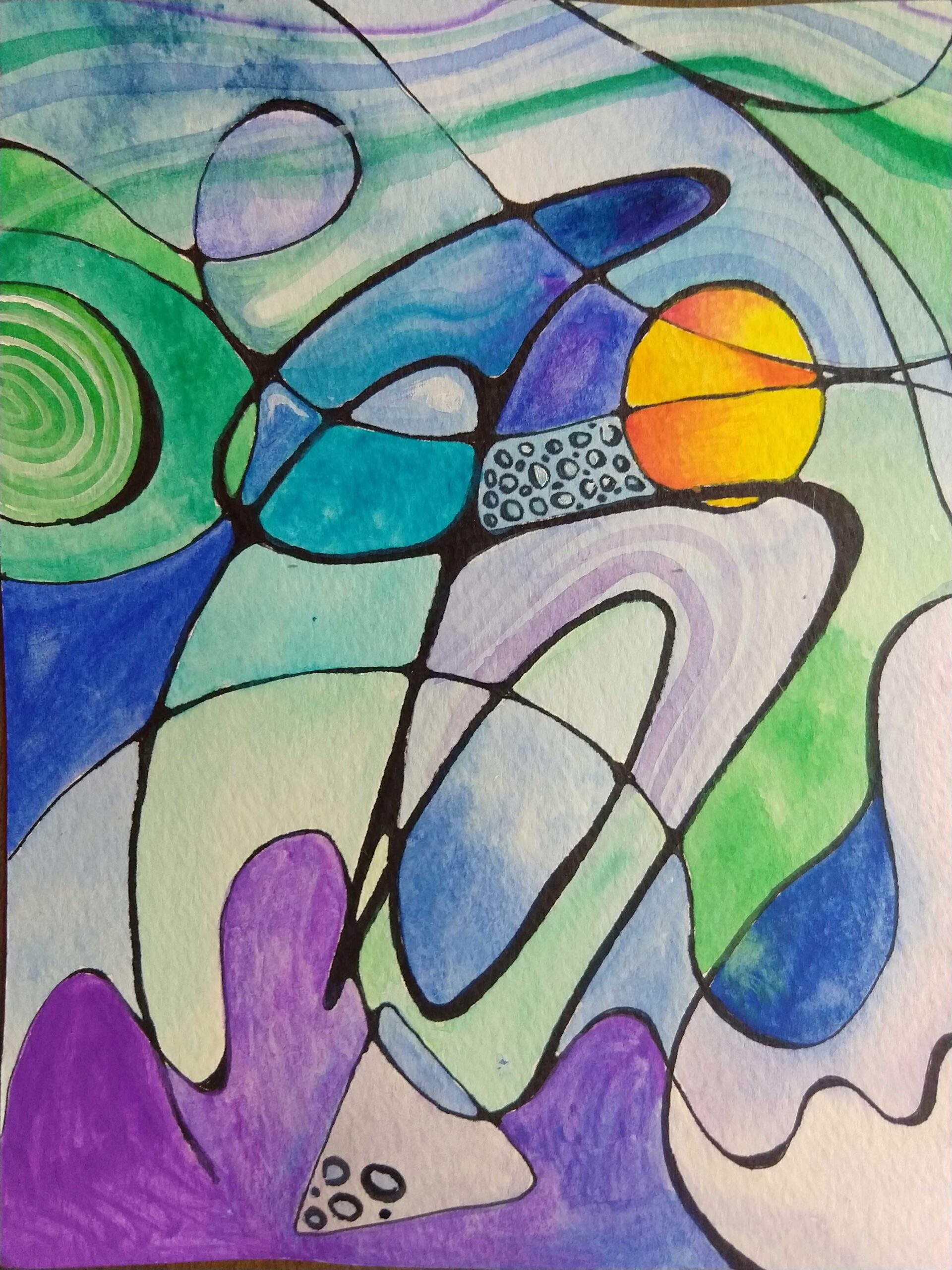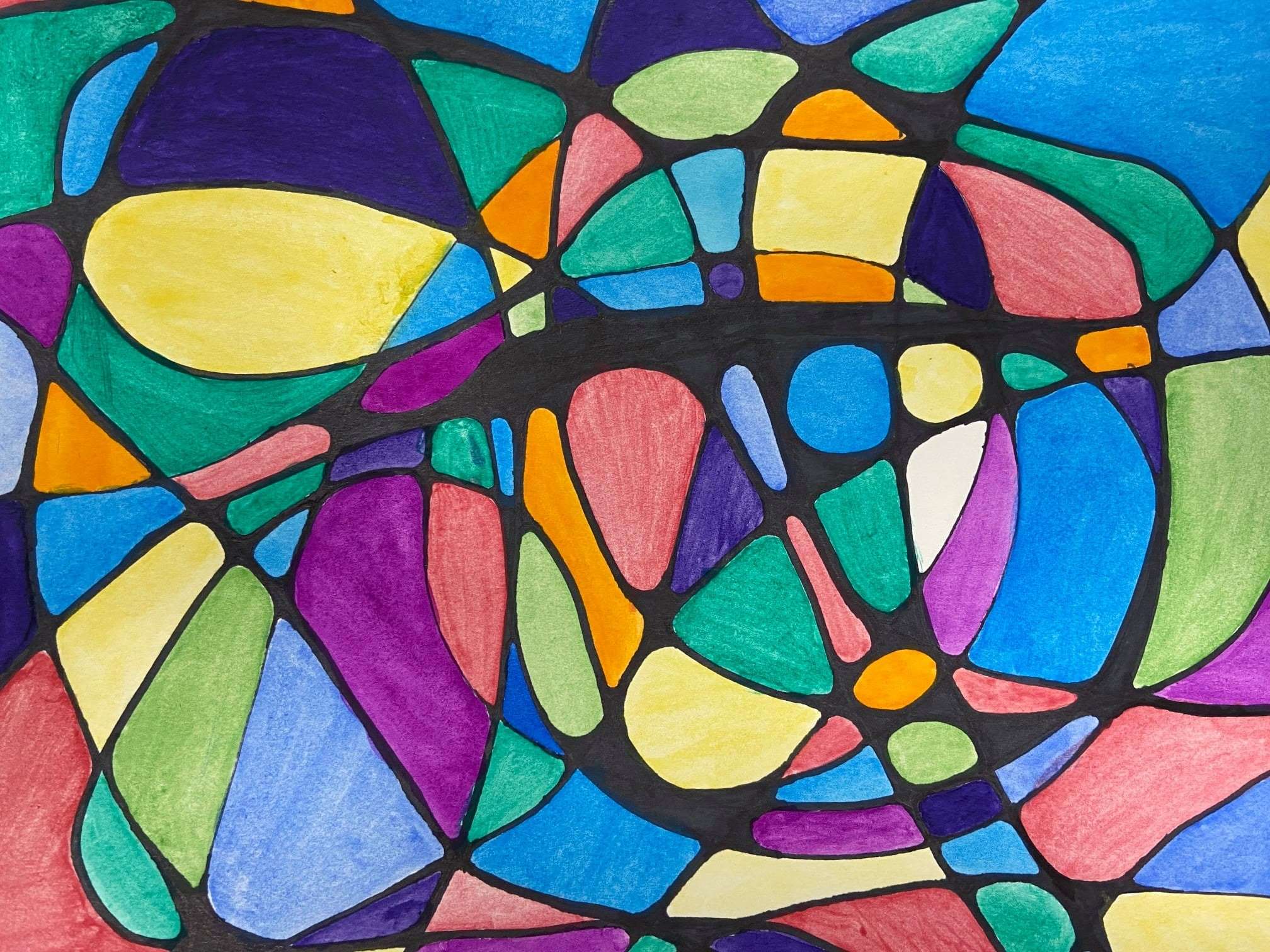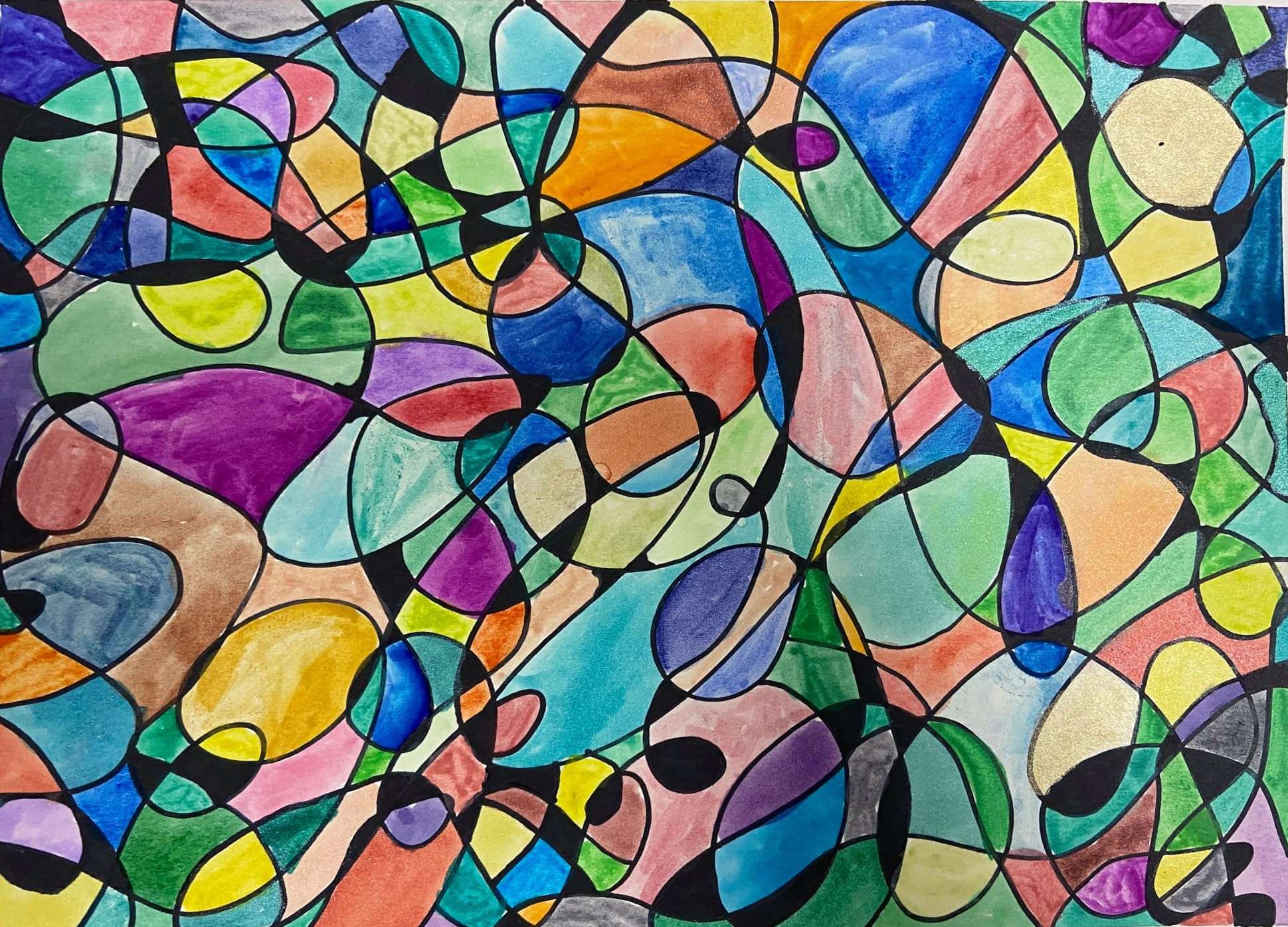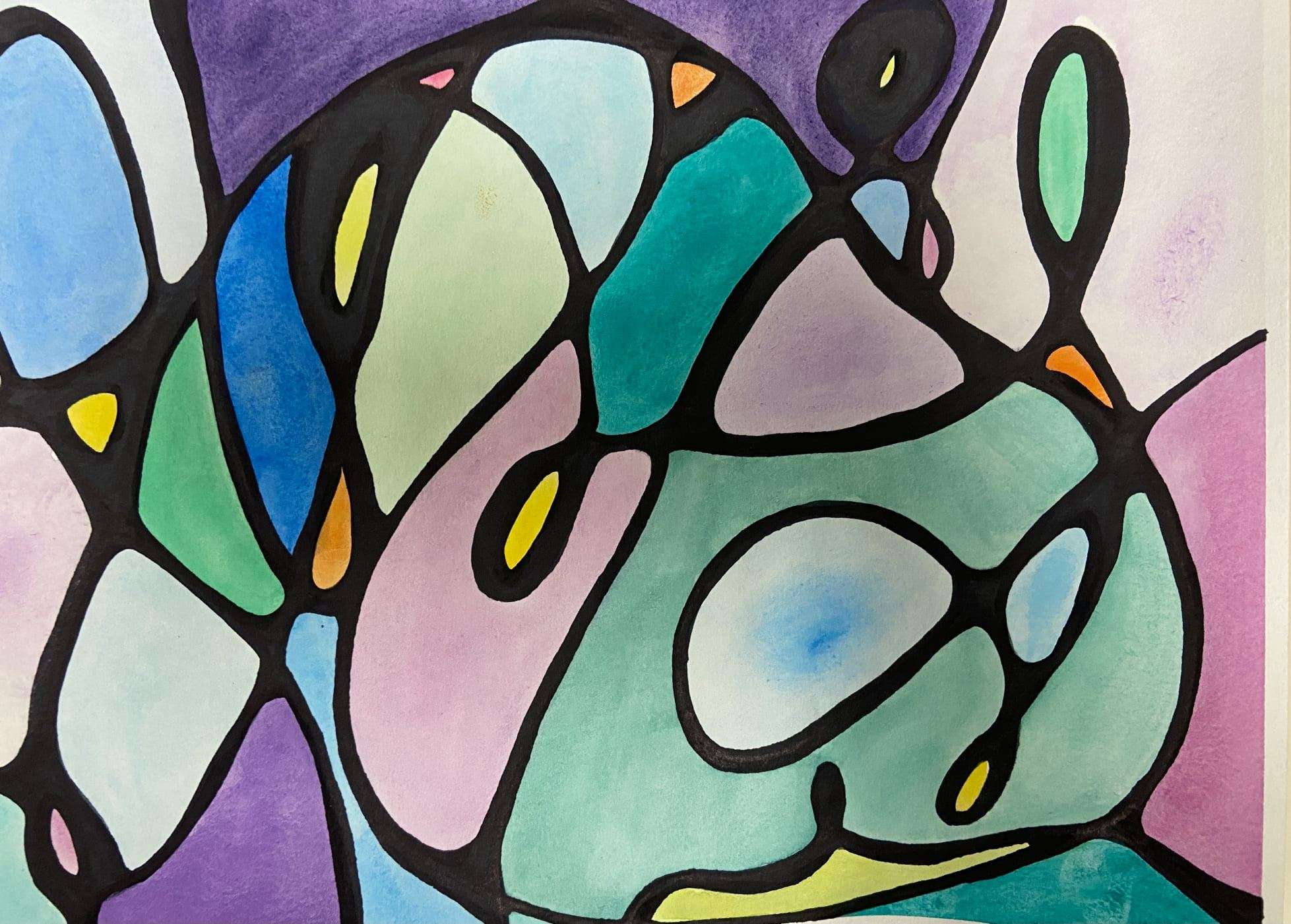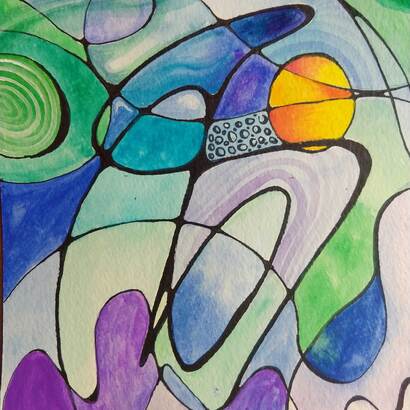
Grade Level
7-8, 9-10, 11-12Duration
3-4 classes of 45 minute length
Materials
Brushes, heavier paper, gouche paints, sharpie marker
* can be done with markers, watercolor, etc.
Media
Gouache, Markers
Lesson Objectives
For the student to understand art as a therapeutic tool.
For the student to understand the process of creating neurogenic art.
For student to use quality of line and compositional skills in creating a personal piece of neurogenic art.
Introductory Activity
Introduce the concept art as a therapeutic tool.
Introduce Neurographic art and the history behind it.
Look at examples of Neurographic art
Lesson Process
There are a variety of resources to turn to for the process. I think every source will describe it a bit differently.
The starting place is to identify a goal, topic or theme. It should be something you are trying to find peace with in your life.
The next step is to think about your topic and the stress it causes you and to emote in a burst. Emoting could be letting out a scream as you draw on your paper. On the paper you should simply be releasing the energy, not attempting to draw.
Go over the line, thickening the line. Extend the beginning and end to go off the paper.
Add more lines (called neurolines) that will travel from one side to the other.
Thicken and curve any sharp edges. As you are doing so, meditate on your issues. From website, Art by Ro, “Curving out is the process of transforming your reality. From whatever it is that’s causing you stress into something more positive.”
Continue until you feel calm and the work feels finished or resolved.
Add color. There are no rules to adding color. You can let this be intuitive and respond emotionally. Maybe you feel peaceful and want the colors to be harmonious, for example.
Vocabulary
line. shape, neurolinesResources
Nonduality and Neurographics | The Deepest Peace
Reflection 4 – Neurographic Art
Author & Website/Blog
Supporting Images

